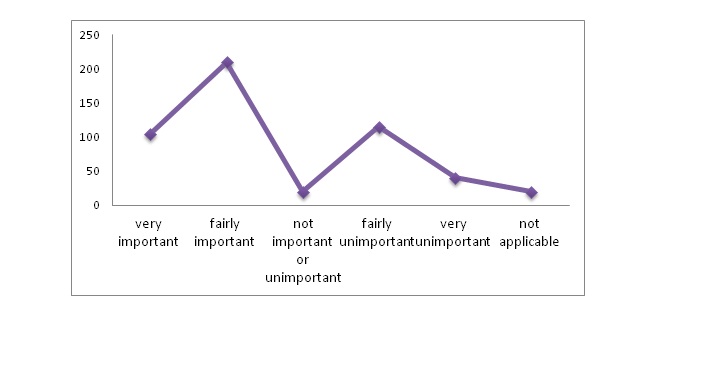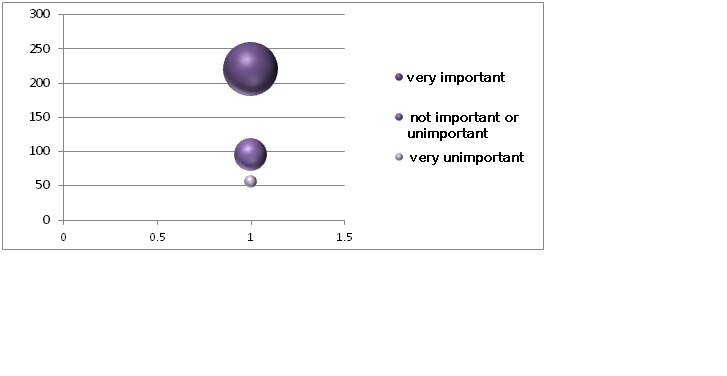
Communication Diversity in Business Organization– Deliberations for Effectiveness
Abstract:
My work focuses on how Variations in Organizational Style in Communication in virtually any business will exhibit the common norms of the business culture, but every organization is also unique in some respects. The new graduate must learn the general rules of business in order to communicate effectively as a part of the business community, but it is equally important to learn what is considered appropriate within his or her own company. No one business organization’s culture is any “better” than another, although some business authors have argued that the most successful companies seem to exhibit “strong” cultures in which everyone agrees on a single, clear way to get things done. Generally, decisions can be made more easily and action taken more quickly when most of the organization’s citizens “know the rules,” even though it doesn’t seem to matter as much what those rules are. It is impossible to say exactly what the communication rules of a particular company will be before spending quite a bit of time getting acquainted. The major differences among business organizations follow cultural patterns that are found among all discourse communities, however, and some principles of “cross-cultural” communication can help an outsider to predict an organization’s expectations.
Keywords: Organizational Communication, Business, Culture, Community
Introduction:Once we understand that organizational structures are related to communication patterns, it is easier to see that different communication norms could arise in various parts of an organization. Differences in their “normal” communication might even define the various units of a large corporation. Very formal, authoritarian boss-subordinate relationships might be the norm in one sales region of a company, while a more relaxed, “open-door” policy encourages distributed decision-making in another region. In fact, a salesperson who transfers from one region to the other might experience considerable difficulty until he/she grows accustomed to the new environment. Employees of the two regions might even find each other “hard to work with” because they don’t realize they are making different assumptions about how communication ought to be done. Learning about organizational communication is only the first step in effective communication within an organization. A person must also learn to recognize variations in communication that can occur, interpret communication differences in productive ways, and make effective choices about how to communicate “across” the many organizational boundaries that exist within a business community.
Scope of the study:
The research work would be carried out across the state and a few other states for cross cultural study and closer analysis. The targeted group includes executives, business personnel and managerial task force of the various organizations.
Research gaps identified in the field of investigation:
The sample would consists of more than 500 respondents at different level of the organizations. The questionnaires to be filled in by the respondents may take stipulated period of time. A few oral discussion/interviews will also form the part of this work. The study would be limited to the respondents who are closely associated with business organizations. It does not include the governments and beaurocratic set up of work place. Another limitation would be of getting the correct and apt response or answer from the respondent. Sometimes they may manipulate their real answer and the expected result cannot be obtained. Moreover the conclusions derived cannot be generalized for it is partially include the data collected from the small chunk of other states.
Objectives of the study:
- To deliberate on the variations in Organizational Style
- To understand the relationship rules across the various cultures
- To study the power distance and its usage
- To understand the significance of the Knowledge and its power in various cultures and level
- To perceive the different ways of interaction of employees & trans-cultural Communication and their ethical deliberations
- To prepare the questionnaire and stages for interviews of the targeted group for data collection
- To analyze and interpret the data and thereby suggesting the nuances of improving ethical behaviour in business organization.
- To foster transparent communication channel at all the levels
Research Methodology:
The present research work is made on the basis of data collected from primary and secondary sources. The data is collected from the targeted group ranging from executives, business personnel and managerial task force of the organization in the setting up the work plan. The data is collected on the basis of questionnaire, interviews and observations made through the reading on the same. The collected data is dully edited, classified and analysed using all type of relevant statistical techniques and employing the most appropriated parametric and non-parametric test. The data is presented through simple classification and with the help of percentage, average, correlation and association. The language used in the work is also simple and lucid.
Hypotheses to be tested:
To realize the objectives of the study the following null hypothesis have been developed for empirical testing:
- Recognize the diversity of business communication as an element of diverse organizational structures.
- Understand the conflict and misunderstanding as a consequence of communication across organizational boundaries.
- Understand ethical communication as a function of communication culture.
Data collection:
It becomes necessary to collect data that are appropriate. There are several ways of collecting the appropriate data which differ considerably in context of money costs, time and other resources at the disposal of the researcher.
- By observation:
- Through personal interview:
- Through telephone interviews:
- By mailing of questionnaires:
- Through schedules:
Data analysis:
Receiving and introducing international visitors to your colleagues in your company?
In sample of 500, I found that there is fairly importance to introduce your colleagues with international visitors and its depend upon the industry in which your company or operation falls.
Socializing with international business visitors

Maintaining the relation with other business organization and other out sliders is main focus of every profit making organization. Also, as my part of research I found also it is important for business organization.
Giving presentations

To giving presentation is no so important for the communication diversity or it is also not so unimportant which I found as my part of research. On the other hand presentation is just clear an idea about the actually content it is not very important for communication purpose

In organization there are lots of meeting to be done but the participation in same is important too every employees of organization because the every crux of the organization is disused over there no matter how small it is.
Knowledge of business etiquettes of various countries and cultures
Communication is the key to success for any business, whether you are operating nationally or internationally, but when operating internationally it becomes even more important due to language barriers. Passport to Trade 2.0 project aims to remove this barrier by providing training materials in the languages of the country you are operating.
SIX WAYS SUCCESSFUL TEAMS ARE BUILT
As you evaluate the sustainability of the team(s) you lead and its real impact on the organization you serve, here are six ways successful teams are built to last:
- Be Aware of How You Work
- Get to Know the Rest of the Team
- Clearly Define Roles & Responsibilities
- Be Proactive with Feedback
- Acknowledge and Reward
- Always Celebrate Success
Conclusion:
This review summarizes the historical trends and the increasing importance of organizational communication, the basic theoretical perspectives that guide the study of communication and the key distinctions that guide the study of organizational communication, the key functions of communication in organizations, and implications of communication technologies for organizations. Because organizational communication has become such a big topic, this review is limited to addressing internal organizational communication. Interactions with external stakeholders and communication of scientific information to external audiences are addressed in separately.
REFERENCES :
- Berger, B. K. (2008). Getting communications on senior management’s agenda. In P. Williams (Ed.), Employee communication: The comprehensive manual for those who communicate with today’s employees (pp. 97-114). Chicago: Ragan Communications.
- D’Aprix, R. (2006). Throwing rocks at the corporate rhinoceros: The challenges of employee engagement. In T. L. Gillis (Ed.), The IABC handbook of organizational communication (pp. 227-239). San Francisco: Jossey-Bass.
- Deetz, S. A., Tracy, S. J., & Simpson, J. L. (2000). Leading organizations through transition: Communication and cultural change. Thousand Oaks, CA: Sage Publications.
- Gay, C., Mahoney, M., & Graves, J. (2005). Best practices in employee communication: A study of global challenges and approaches. San Francisco: IABC Research Foundation.
- Harris, T. E., & Nelson, M.D. (2008). Applied organizational communication: Theory and practice in a global environment. New York: Lawrence Erlbaum.
***************************************************
Dr. Alpesh Joshi
Atmiya Institute of Technology & Science
Rajkot



Home | Archive | Advisory Committee | Contact us